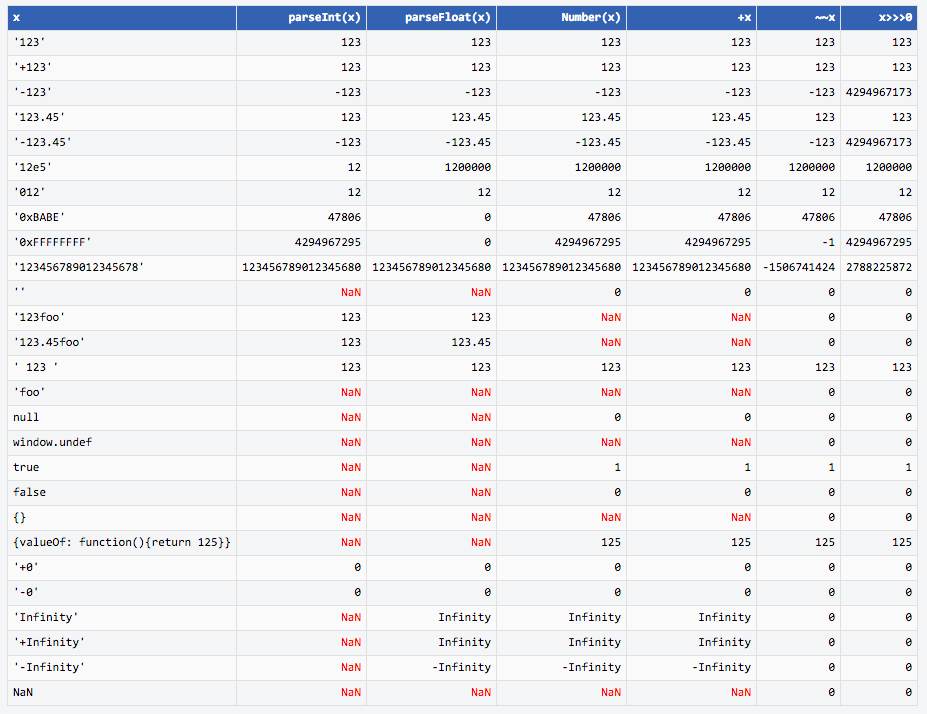Today I learned:
In JavaScript it is possible to use the
+operator alone before a single element. This indicates a math operation and tries to convert the element to a number. If the conversion fails, it will evaluate toNaN. This is especially useful when one wants to convert a string to a number quickly, but can also be used on a select set of other types.
For example, the snippet below will return a timestamp, instead of a Date:
function fn() {
return +new Date;
}That’s because it is the equivalent of this snippet:
function fn() {
return Number(new Date);
}So, is there a difference between parseInt() and the unary + operator then, one might wonder? Here’s a handy overview:

JavaScript Unary Add →
x vs. parseInt(x) vs. parseFloat(x) vs. Number(x) vs. +x vs. ~~x vs. x>>>0 →